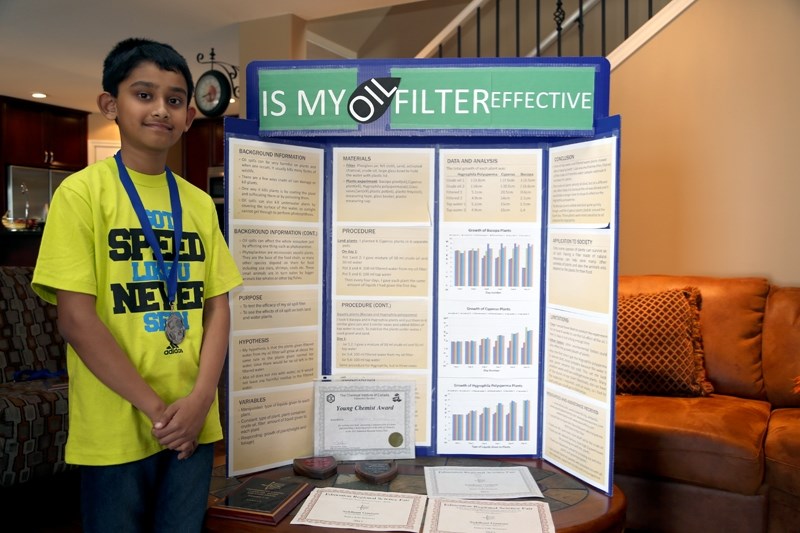R.F. Staples Grade 7 student Siddhant Gautam is the Westlock area’s top winner from the Edmonton Regional Science Fair.
Competing against dozens of Grade 7-8 students in the Junior Life Sciences division at the April 6-7 event at NAIT, Gautam placed second in his division.
“It feels great,” he said. “It’s really nice that I got recognized for my project. I would have liked to win first, but then I can’t really win every single time.”
Besides winning silver in his division, Gautam also won the Environment Canada Clean Air, Water and Land Award, and earned an honourable mention in the ACPA Rick Dillen Memorial Award.
Joining Gautam as award winners from the Westlock area were Camille Williams and Shayla Woodcock, Grade 6 students at St. Mary, who took bronze with their project, “Pet Smart.”
At the Grade 4 level, Camryn Wiegand and Erika Huppertz took silver for their “Pretty Paint” project. Skye Sekulich earned bronze for her project, “A Moldy Breadxperiment,” while Zachery Strydhorst also claimed bronze for his “Mini Explosions” experiment.
Westlock Science Council secretary-treasurer Sue Chapotelle said she was very impressed with the projects that came out of the Westlock area.
“All of the projects showed very well,” she said. “They did well even if they didn’t win an award. They can all be proud of their efforts.”
In fact, Chapotelle said being given an honourable mention, as Gautam was for the Rick Dillen award, is a strong accomplishment in itself.
“In order to win even an honourable mention at the regional level is indeed an honour,” she said.
Working on science fair projects teaches students things above and beyond what they learn through researching their projects, Chapotelle added. They learn how to do research and problem solve, along with organization and public speaking skills.
“All of those skills are a benefit to those students,” she said.
Gautam’s project was called “Is my Oil Filter Effective?”
What he did was filter a water-crude oil mix through a homemade filter and then water several different plants with the filtered water.
It was a continuation of his project from last year, he said, when he built and tested several different filters. This time, he used only one model of filter — the one that produced the best results last year.
“I never actually got the chance to test it on plants (last year),” Gautam said. “I wanted to continue my experiment.”
Testing the filtered water on plants also served as a way to see how well the filter worked, beyond simply observing how clean the water looked, he explained.
Once at the fair, Gautam said the environment was fairly relaxed and there were no cases of projects being sabotaged.
“They’re really nice people,” he said. “They say good things about your project, and you can make friends with them.”
Although the fair was ultimately a competition, Gautam said it didn’t have that feel.
“It’s more like an exhibition because you’re not really against anybody else,” he said.
With a silver medal around his neck, Gautam is already thinking about what he’ll do as a project next year, but has no concrete ideas yet.
However, he said he is gunning to win his division, which will earn him a berth at the national science fair.



